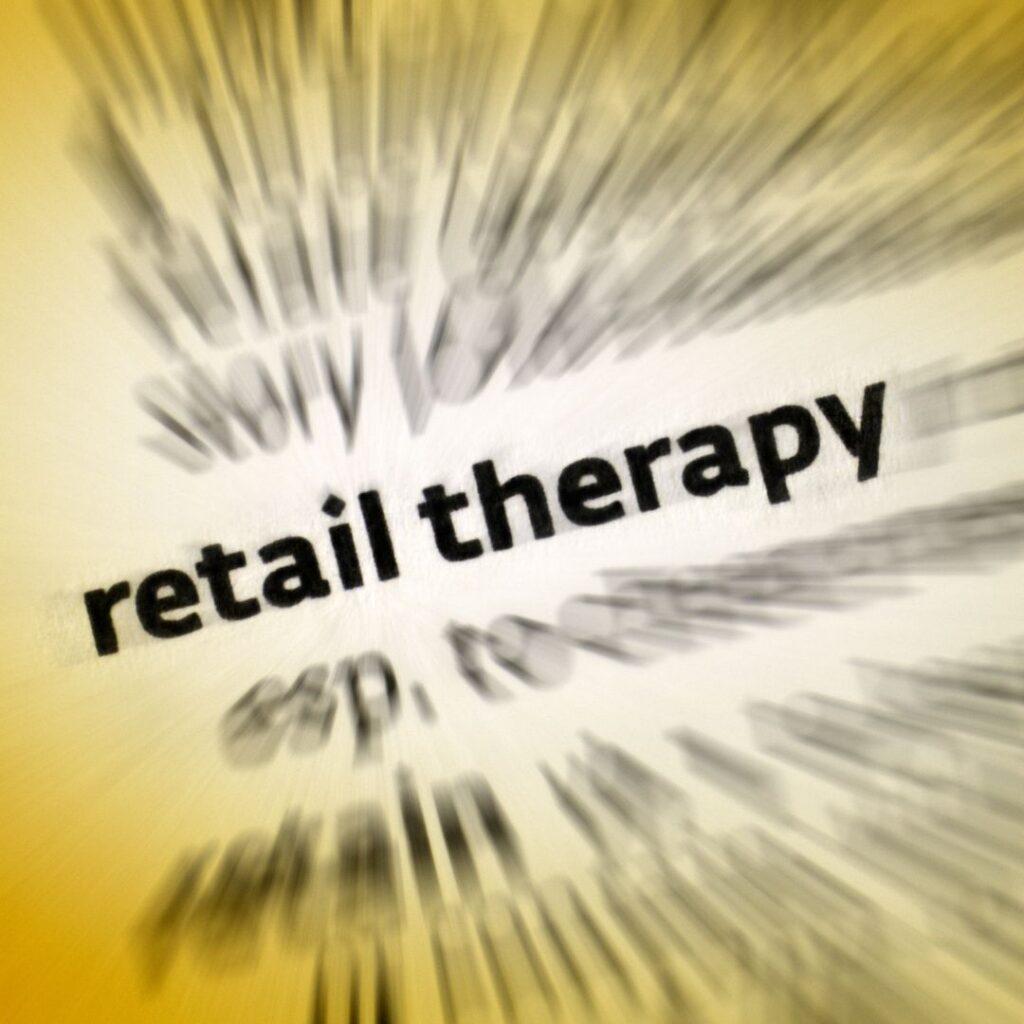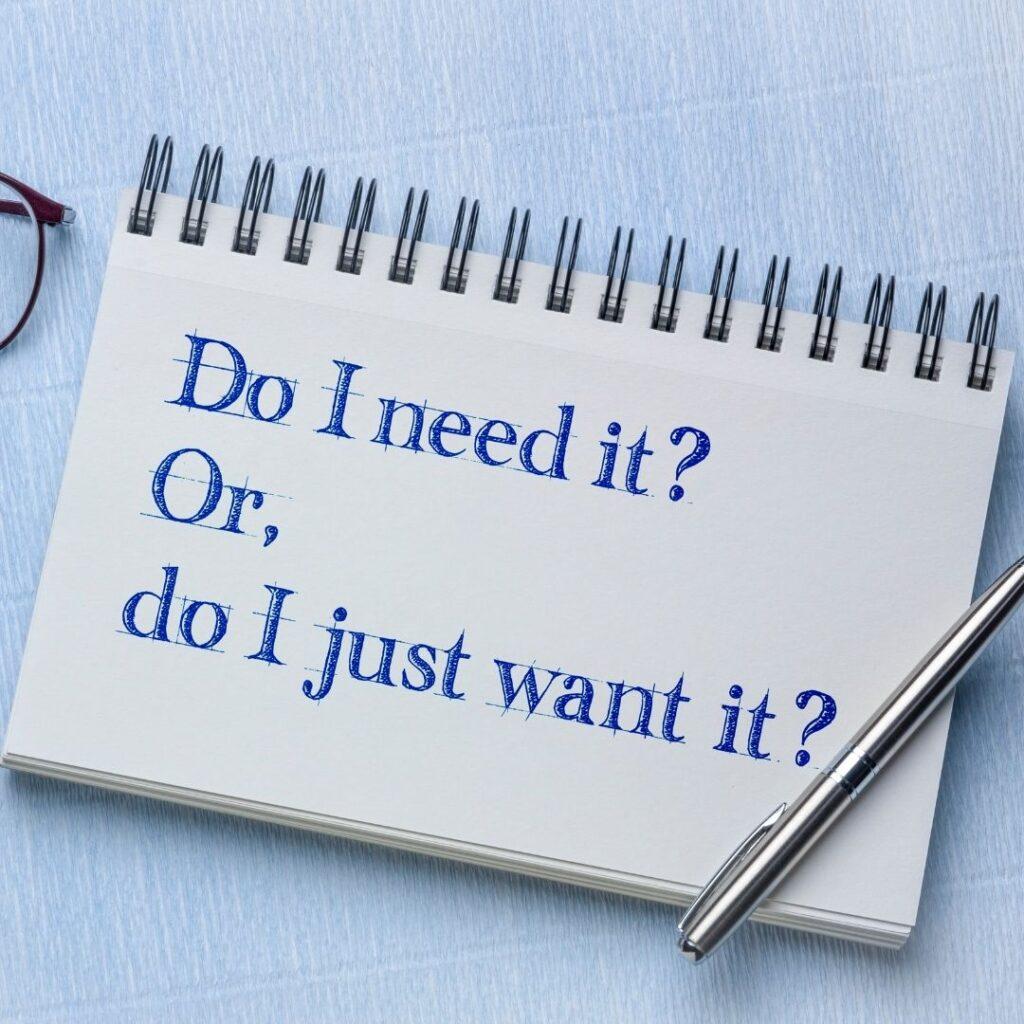Have you ever gone shopping just to feel better? If so, then you’re one of the millions of people that participate in what’s called Retail Therapy.
While everyone responds to stress differently, if not controlled, what started off as an innocent trip to the mall to boost your mood can quickly develop into an addiction that can become detrimental to your health and your wallet.
Read on to learn some easy tips on how you can continue to practice self-care while also making sure your finances stay intact!
What is Retail Therapy?
Retail therapy – also synonymous with stress-shopping and emotional spending – is when one shops in order to make themself feel happier or to relieve emotional distress.
Believe it or not, retail therapy is one of the most common ways Americans deal with stress. In fact, an online survey conducted by the Huffington Post showed that 1 and 3 Americans turn to retail therapy to deal with anxiety. The study found that women are more likely than men to handle stress and anxiety through retail therapy, with women more likely to purchase clothing items and men more likely to purchase food.

— WebMD
What differentiates retail therapy from regular shopping is that it is often triggered by emotions – serving as a distraction from stress and providing instant gratification that temporarily makes you feel better – rather than by necessities that need to be met.
Why Do People Turn to Retail Therapy When Stressed?
So, why is retail therapy such a popular form of relaxation when people are stressed? The short answer is… Because it makes us feel good!
Suppose you had a long day at work filled with tight deadlines and a micromanaging boss hovering over your shoulder. At the end of the day your stressed out, tired, and in need of some type of relief. If you’re like 1/3 of Americans, you head to your favorite store to find relief and treat yourself with a reward for all your hard work.
After shopping around for a while and purchasing an item, you notice that your mood is uplifted and your stress seems to have melted away. So, what is it about this pastime that instantly improves your mood?

According to research conducted by the Cleveland Clinic, “making shopping decisions can help reinforce a sense of personal control over our environment. It can also ease feelings of sadness.”
“MAKING SHOPPING DECISIONS CAN HELP REINFORCE A SENSE OF PERSONAL CONTROL OVER OUR ENVIRONMENT. IT CAN ALSO EASE FEELINGS OF SADNESS.”
A 2011 study studied of over 400 adults in three different experiments reinforces this idea when they drew the following conclusions:
- Unplanned shopping helps to relieve bad moods
- Retail therapy usually doesn’t involve negative effects, such as buyer’s remorse, guilt, anxiety, or other distress
- The mood improvement associated with retail therapy seems to last well past the purchase
In general, experts believe that retail therapy tends to provide more positive outcomes than harm. But problems can arise when emotions begin to override rational thinking and you begin to make purchases with no forethought or budget plan.
Unintended Consequences of Retail Therapy
Retail therapy is not inherently bad, and is proven to boost people’s mood, but the feeling is often short-lived and only provides temporary happiness that can easily turned into an addiction if not controlled.
If retail therapy escalates into compulsive shopping, you could end up negatively effecting your finances by:
- Decreasing your credit score if you run up a high bill
- Overspending and accumulating debt
- Neglecting other financial obligations
- Not working towards your financial goals
You might also affect other areas of your life by:
- Purchasing things you don’t need
- Hiding purchases from your significant other
- Lying about the amount of money your spending
- Mismanaging your time and disregarding other obligations
All of these are warning signs of a bigger issue. Shopping once-in-a-while to boost your mood can be therapeutic, but when it begins to cross the line into compulsive shopping, you have to ask yourself “Am I still in control of my shopping, or have a lost control of the situation?”
So, while retail therapy isn’t bad in and of itself, when not properly monitored, it could lead to serious mental, emotional, and financial issues once the dopamine high wears off.
Tips to Fight Stress-Shopping and Emotional Spending
If you’re trying to ensure that retail therapy doesn’t interfere with your long-term financial goals, or just want to break the habit of stress-shopping/emotional spending entirely, we have a few easy ways you can proactively take control of your spending.
All of these tips aim to help you have more control over your finances, avoid accumulating debt, and find new ways to practice healthier coping methods that don’t lead to excess shopping on unnecessary items.
Learn What Triggers You
Understand what’s causing you stress and creating the impulse to shop is the first step towards breaking the habit of compulsive shopping.
Some of the common triggers of stress-shopping (and why we do it) include:
- Grief/Loss (to fill a void)
- Anger/Feeling that life is unfair (to get back/make life right)
- Depression (to get a lift)
- Anxiety/Stress (to comfort or soothe)
- Acceptance/Competition (to fit in)
- Power/Control (to feel empowered or in control)
- Boredom/Excitement (to live on the edge)
- Shame/Low self-esteem (to distract from feelings of worthlessness)
- Entitlement/Reward (to compensate for over-giving or sacrifice)
- Rebellion/Initiation (to break into one’s own identity)
Next time you have the urge to spend compulsively, stop and ask yourself “how do I feel in this moment that’s making me want to shop?”. Once you begin to recognize your triggers, you can then start the process of addressing the underlining issue.
Needs vs. Wants
An easy way to scale back the amount of stress shopping you do is to ask yourself before every purchase, “is this is something that I actually need, or is it something that I want?”.

Asking yourself this simple question can help you focus your retail therapy on purchasing things you actually need so you’re taking care of your home life, emotional health, and finances all at the same time!
Add Retail Therapy to Your Budget
If you know retail therapy is your go-to when you’re feeling stressed out, go ahead in add that as a monthly expense to your budget.
By adding retail therapy to your budget, you can still practice self-love but now it’s planned for and you’re in complete control of how much you spend every month. Planning for this expense will go a long way in making sure you don’t end up causing yourself financial stress in the future.
Practice Using a 48 Hour “Cooling Period” Before Making a Purchase
When you feel the urge to stress-shop, take a step back and wait 48 hours before making your purchase. This will give you time to decide if you really need this item, or just want a quick dopamine boost.
A cooling period will also give you time to figure out what’s causing you to want to shop and figure out a less costly alternative to address the underlining issue.
Seek Therapy or Support If You Sense the Situation Is Out of Your Control
If your retail therapy is starting to look more like compulsive shopping, it might be a sign of a bigger issue that may require professional help to address.
Signs you might want to seek professional help is if your excessive shopping is getting you into credit card debt, fights with your family and friends over money, or if you’ve tried to stop shopping excessively but found the impulse too much to control.

There are also great free resources available to you such as Debtors Anonymous, who offers support for people “whose use of unsecured debt causes problems and suffering in their lives and the lives of others.” This support group provides counseling through in-person group meet-ups, a podcast, literature, and an email newsletter.
Block Emails and Ads from Retailers
If you’re being bombarded with emails and ads on social media for the newest gadget or the latest sale, it can be hard to resist the temptation to make a purchase – especially if you’re already in an emotional state.
One way you can avoid these temptations is by limiting your exposure to them. Unsubscribing from the email lists of your favorite stores and opting out of personalized ads on social media are proactive ways that you take control of your shopping.
Make It Difficult to Impulse Shop
Is blocking emails and ad promotions not helping you to avoid impulse shopping? Maybe you need to take stronger actions such as:
- Deleting shopping apps such as Amazon or other retail stores that make it easy for you to impulse shop
- Adding passwords to shopping accounts to create an additional roadblock to making purchases
- Take a new route home to avoid your favorite stores
Save Money Towards a Reward
Remember that feeling of excitement you get the weeks before going on vacation or before a big event? Well… What if you could create that feeling for yourself whenever you wanted to help boost your mood? Good news, you can! All you have to do is save the money you would’ve normally spent and give yourself an even bigger reward in the future.

By saving up money to treat yourself rather than giving in to instant gratification, you can build up anticipation and excitement that’ll release dopamine (the “feel good” hormone) over a longer period of time.
Replace Stress-Shopping with New Hobbies
Giving up something that brings you joy cold turkey can be tough. So tough in fact, that it might drive you back to the old habit just to relieve the stress from trying to quit!
Rather than completely forgoing the dopamine boost you get from shopping, you can replace it with a new, less expensive, and healthier habit.

Habits that are proven to give you the dopamine boost you’re craving include things such as: exercising, talking with friends and family, or even saving money for a long-term goal!
Conclusion
Retail therapy can create excitement and relieve stress, but moderation is the key between happiness and compulsiveness.
As long as you plan ahead with a budget, recognize the emotional triggers that comply you to shop, and don’t let a coping habit turn into an addiction, you can enjoy the benefits of self-care and still stay on track to reach your financial goals!















